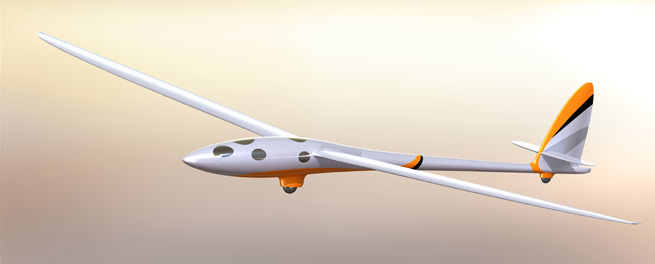
A small team is aiming to soar to the far reaches of the stratosphere in a specially designed glider that will transport its pilots to a desperately lonely place.
Within the next two years, the team plans to fly into the ozone hole and gain a better understanding of climate change. They also want to document the structure of a mysterious lifting force that could catapult them to 90,000 feet or more.
"We're going to explore a part of the atmosphere we don't know much about," said Ed Warnock, CEO of the Perlan Project. Perlan is an Icelandic word for pearl, a subtle salute by the team to high-altitude mother-of-pearl clouds.
But how do you get there without an engine?
Mountain waves
Since the 1930s, glider pilots have been exploring mountain waves. Simply put, they occur when high winds approach mountain ranges at perpendicular angles. The air then flows up and over in a wavelike manner. Pilots carefully maneuver on the leeward side of the mountains and ride the updrafts to extreme altitudes.
In 1961, Paul Bikle set an absolute altitude record of 46,267 feet. And in 1986, Robert Harris pushed it to 49,009 feet. Both records were achieved over California.
These adventures inspired a new generation of high-altitude fliers. Test pilot Einar Enevoldson one day saw some interesting weather data captured over northern Scandinavia. He then envisioned the Perlan Project, which could possibly double those flight records. What the project needed, though, was money.
When globe-trotting adventurer Steve Fossett heard about it, he joined the team as a pilot and major sponsor.
Modifying an existing unpressurized glider was the easiest way to get started. The team's German-built DG-500M glider carried a large oxygen supply. In 2002, Enevoldson and Fossett began flying it over the Sierra Nevada and in New Zealand, but they needed more favorable conditions.
Extreme weather
Meteorologist Elizabeth Austin, who joined the team in the late 1990s, was tasked with scouring the globe for the right weather.
In most parts of the world, mountain waves run out of steam on their own. But near the South Pole in southern Argentina, the polar vortex swirls in a roughly circular pattern. When it aligns with the jet stream, a new energy source is created by allowing the lower-level mountain wave to continue propagating upward. The vortex is strongest in winter when there is a wider temperature difference between the pole and equator.
The team decided to set up shop in El Calafate, Argentina. Wearing bulky pressure suits, Enevoldson and Fossett were towed aloft by a powered airplane on Aug. 29, 2006. Once they released from the tow rope, it took them four hours to make their way up to 50,722 feet (15,460 meters), a new absolute altitude record for unpowered sailplanes.
But the Perlan Project suffered a huge setback when Fossett died in an unrelated airplane crash a year later. New team members, including Dennis Tito, the original space tourist, joined up. With more funding, the next phase of the project was able to march on.
Building a new glider
Going higher required the construction of a new two-seat sailplane with a pressurized cockpit and aerodynamic trickery to improve stability. Small control deviations by pilots could cause it to accelerate rapidly and lead to structural disaster. Pilots will have to deal with waves that change shape, break, or produce severe turbulence.
The new sailplane, Perlan 2, is being constructed by Windward Performance, a small aircraft manufacturer in Bend, Ore. It has a wingspan of 84 feet, a takeoff weight of 1,800 pounds, and is designed to carry enough oxygen for seven hours. The team plans to begin flight tests in early 2014.
Beyond 90,000 feet
Once again, the team plans to stage in Argentina during the winter months. They'll be looking for prefrontal activity that produces mountain waves and, at the same time, they're hoping the polar vortex wobbles in the right direction. Fronts pass through the area about every four to six days.
If the team reaches 90,000 feet, it plans to go for 100,000 feet, but just gaining an extra 10,000 feet may require a new design.
Perlan 2 is now about 80 percent complete and is awaiting more funding to the tune of $500,000. "When it comes in, we build," Warnock said.
Because the Earth's atmospheric pressure at 100,000 feet is similar to that on the surface of Mars, there is interest among other scientists and engineers in designing aircraft that can routinely fly in those conditions. They'll be closely watching the Perlan Project, as well.


